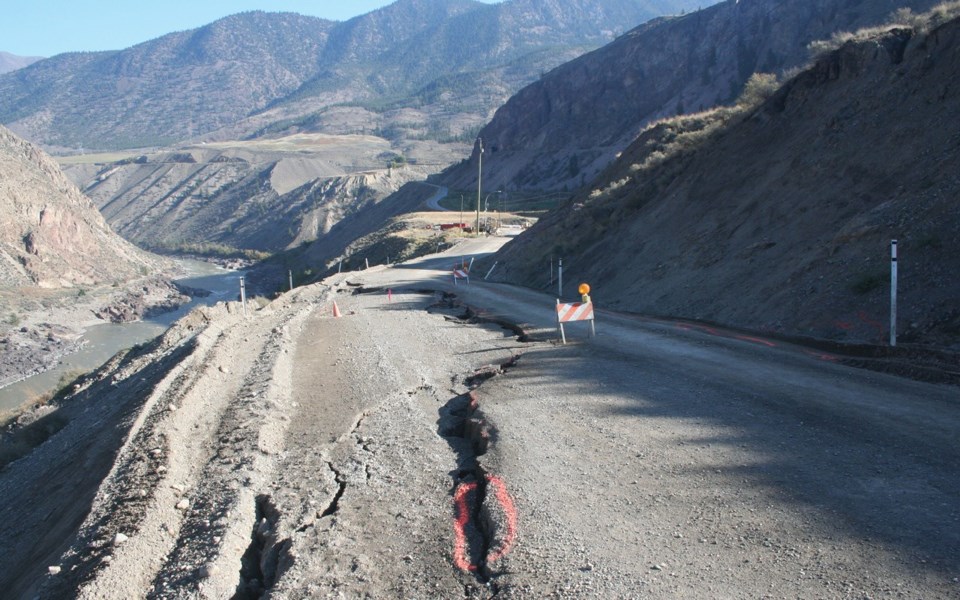The province is set to undertake a major construction project to stabilize a massive, active landslide that has impacted a treacherous section of Highway 99 for decades.
Known as the Ten Mile Slide, the landslide area bisects the highway (as well as a Canadian National Railway line) approximately 17 kilometres northeast of Lillooet.
"This is an enormous, naturally occurring landslide," explained project manager Scotty McKenzie.
"It's approximately 200 metres wide by 300 metres long, and contains more than 1 million cubic metres of material."
For the past two years, the affected section of highway has been reduced to single-lane traffic, with motorists navigating a narrow gravel road with no barrier.
And as any motorist can tell you, the views below—of the sprawling Fraser Canyon—can be unnerving.
"It's not two lanes because we've lost so much of the road over the past few years," said McKenzie.
According to the Ministry of Transportation and Infrastructure, the province typically invests between $240,000 and $2.3 million annually to maintain the highway through the Ten Mile Slide area.
"One of our most recent major events was in fall 2016, when there was so much movement that the Ministry had to close the highway for a period of approximately eight days," said McKenzie. "During that closure, we saw movement rates at the slide peak at approximately an inch an hour."
McKenzie said that while the chances of a catastrophic landslide wiping out the highway are "relatively low," the impacts to the road are "substantial"—and it's time to act.
"The amount of money we invest annually to keep that section maintained is humongous," he added.
The main stabilization contract has been awarded to Flatiron Constructors Canada. The work is slated for completion in spring 2021.
To secure the area, workers will install about 200 "soil anchors" into the hillsides above the highway. The additional anchors will compliment 44 soil anchors that were installed during Phase 1 of the stabilization project.
The anchors are used to stabilize the slow-moving ground, explained McKenzie.
"We drill and install large steel anchor bars ... into the more stable gravel below," he said, adding that the anchor bars are placed "anywhere between 15 and 35 metres in depth."
The anchor bars are attached, via a cable, to a block that sits on the surface.
When tension is applied, the "unstable earth" is effectively squeezed between the anchor bars and the "more dense gravel below," causing the slide to stabilize, said McKenzie.
The project will also see the reconstruction of the affected section of highway, which sees around 1,600 vehicles per day.
For area locals, Highway 99 is a critical thoroughfare, providing access to the region's main medical facility in Kamloops.
Moreover, the slide is located within the Xaxli'p Fountain Indian Reserve, having an outsized impact on the First Nation's members' ability to travel easily between the reserve and Lillooet.
According to McKenzie, the province is working closely with the Xaxli'p First Nation, and identifying opportunities for them to participate in the construction project.
"We are requiring the contractor to develop an opportunities plan that will provide training and work opportunities throughout the duration of construction," he said.
During construction, drivers can expect delays and temporary closures.
Motorists should slow down and use caution when travelling through the work area, according to the release.
Ministry staff will continue to monitor the slide for approximately two years before paving the new section of two-lane highway.




